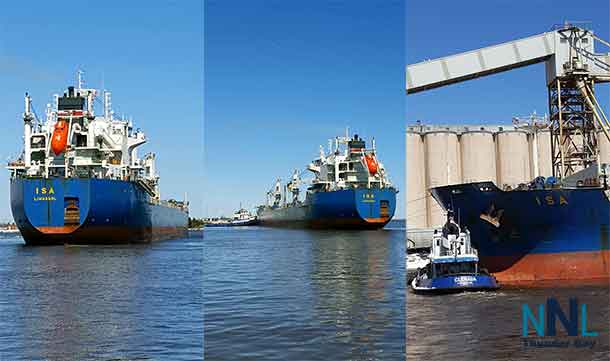THUNDER BAY – TRANSPORTATION – The water levels in Lake Ontario are continued to be very high. The impact is hitting on several parts of the region.
The International Lake Ontario – St. Lawrence River Board decided to maintain the outflow from Lake Ontario at 10,200 m3/s (360,200 cfs) again for at least another week to address high water levels and associated impacts throughout the system. This high outflow has been released since 23 May 2017 to provide relief to residents along the shorelines of Lake Ontario while not exacerbating the impacts to shoreline residents downstream.
Water levels downstream on the St. Lawrence River near Montreal remain at nearly the same high levels seen since early May due to these high outflows and continued rainfall in the Ottawa and other local tributary basins. Despite rains last week, the water level of Lake Ontario has remained relatively stable for the past three weeks. As of 6 June the level had declined three centimetres (1 inch) from the highest daily level reached as recently as 29 May. While the levels are forecast to continue to steadily decline, significant additional rainfall may temporarily halt the declines or even cause short term rises.
The current outflow is equivalent to the historic maximum weekly average outflow from Lake Ontario which previously occurred for a three week period 1993 and for another week 1998, both very high water years. The Board has been maximizing the outflows from Lake Ontario in consideration of balancing water levels upstream and downstream to minimize flood and erosion impacts to the extent possible. The Board is also considering options that may allow it to increase the outflow further, once downstream conditions permit.
Following the second-wettest April and record-wettest May since reliable records began in 1918, it has been generally drier across the Lake Ontario – St. Lawrence River basin. The first week of June has been drier than the long-term average first week of June, a typically wet month. If these drier conditions continue, the high Lake Ontario outflows are expected to surpass inflows, at which time Lake Ontario’s water level will decline. However, owing to the huge surface area and large volume of water on Lake Ontario, it will take several weeks to significantly reduce levels, and longer to return to the average water level for the time of year. The Board therefore advises continued caution, especially when onshore winds are predicted, as high water levels will persist for weeks to come. Considerable debris is floating in the waters posing further risks to boaters.
On 7 June 2017, Lake Ontario was 75.85 m (248.8 ft), 80 cm (31.5 inches) above its long-term average level for this time of year. The level at Lake St. Lawrence was 5 cm (2.0 inches) above average, while the level at Lake St. Louis was 22.51 m (73.8 ft), 110 cm (43.3 inches) above average. At Montreal Harbour, the level was 137 cm (53.9 inches) above average. Downstream, the flooding which has caused evacuations around Lake St. Peter continues.
The Board continues to monitor the system and will confer again on 12 June 2017.






